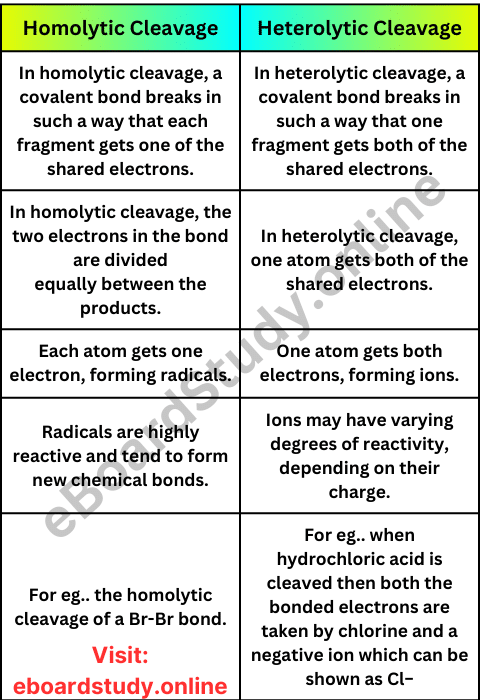Homolytic Cleavage:
Homolytic cleavage is like a friendly breakup between atoms. When a chemical bond between two atoms is cleaved homolytically, each atom involved in the bond gets one of the electrons. It’s like they’re parting ways, but they’re still on good terms. This results in the formation of two “radicals.” Radicals are atoms or molecules with unpaired electrons, making them highly reactive.
Imagine you and your friend each have a toy, and you decide to share them equally. This is similar to hemolytic cleavage. Each atom gets its electron, and they go their separate ways, ready to react with other atoms and molecules.
When a covalent bond breaks homolytically, each fragment receives one of the shared electrons. The two electrons in the bond are split evenly amongst the products during homolytic cleavage. The homolytic cleavage of a Br-Br bond, for example.
Heterolytic Cleavage:
Now, let’s talk about heterolytic cleavage. This is a bit different from homolytic cleavage because it’s not an equal split. When a chemical bond is cleaved heterolytically, one atom gets both electrons from the bond, while the other atom gets none. It’s like a breakup where one person keeps everything and the other person gets nothing in return.
Think of it as a scenario where you and your friend are sharing toys, but this time, one of you ends up with both toys, leaving the other with none. In chemistry, this leads to the formation of ions, which are charged atoms or molecules.
Difference between Homolytic and Heterolytic cleavage [in Table]


